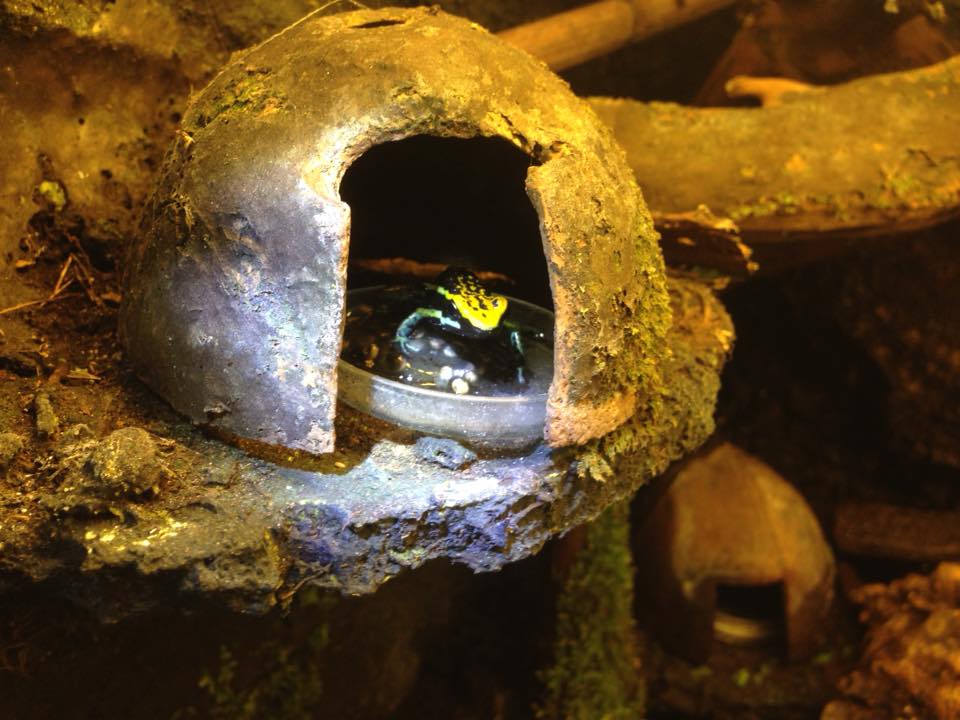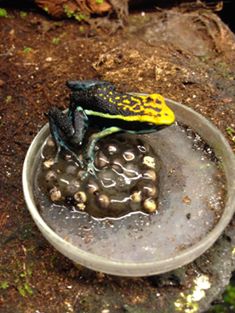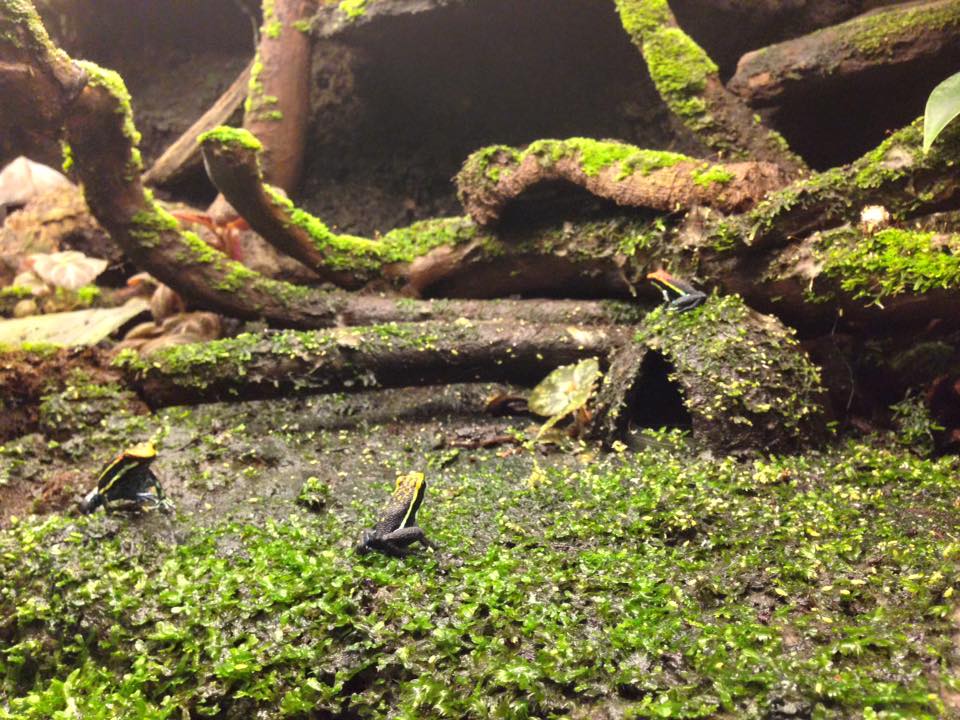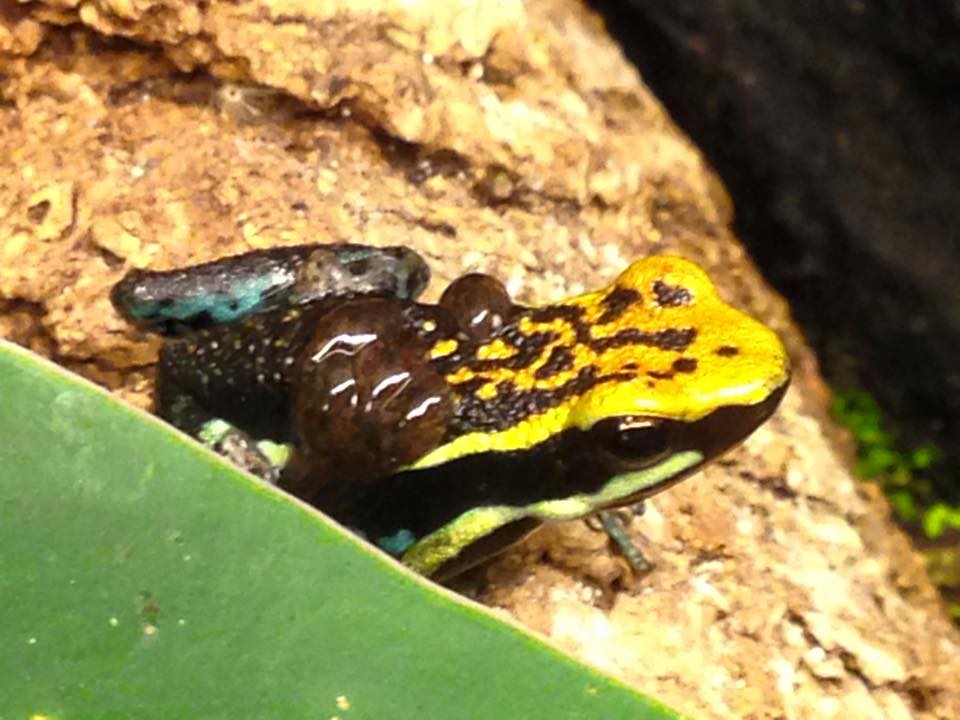

A. pepperi “Orange”

A. pepperi “Orangehead”

A. pepperi “Yellow/Gold”


A. pepperi “Abiseo”

Ameerega pepperi from Polvora, San Martin, Peru. Photo by Evan Twomey. |
Distribution
Distributed throughout the upper Huallaga valley, approximately between the towns of Juanjui and Tocache. May occur more widely throughout the Cordillera Azul. Occurs at elevations from 380 m to approx. 1000 m. View type locality in Google Maps.
Natural history
This species is most frequently seen near streams in the montane regions of south-central San Martin. They are most common in undisturbed areas, although some populations occur in areas of moderate disturbance as long as the streams remain shaded. Tadpoles are deposited in eddies that form in small streams. Ameerega pepperi is sympatric with A. trivittata and A. altamazonica.
Conservation status
Brown and Twomey (2009) suggest this species be listed as Least Concern following IUCN criteria. The region where this species occurs is relatively intact, and populations appear to be thriving. Additionally, this species likely occurs in the Rio Abiseo National Park and Cordillera Azul National Park.
Notes
Silverstone (1976) referred a single specimen of A. pepperi to A. bassleri. This species was found again by Mark Pepper in 2005, who documented numerous localities throughout the upper Huallaga canyon. Originally thought to be just southern populations of A. bassleri, Brown and Twomey (2009) described this species on the basis of call parameters and phylogenetics. The phylogenetics of this species are still not entirely resolved, although A. pepperi appears to be sister to the clade containing A. bassleri plus A. yoshina. Despite having a relatively large range, there appears to be very little genetic structure within this species when compared to A. bassleri.
This species displays substantial morphological variation along a north-south geographic axis. Populations in the north are generally more yellow; as one moves further south these frogs become orange, and frogs in the southernmost locality are red.

















